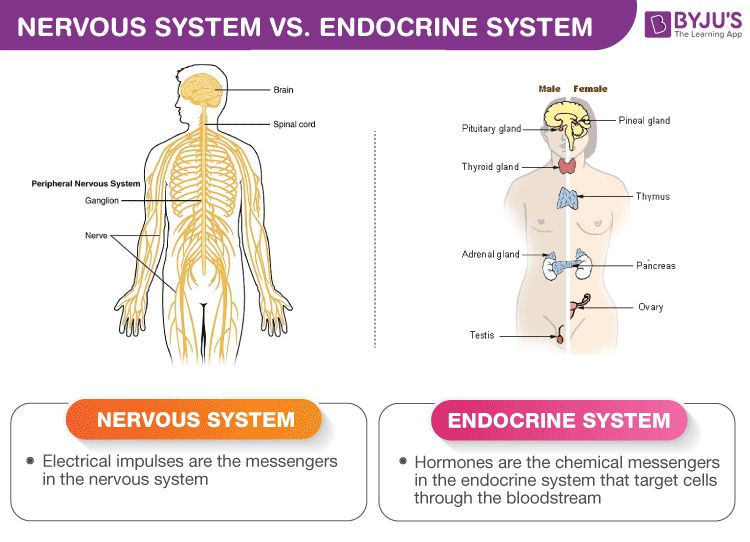
The endocrine system is a complex network of glands and organs that produce, store, and release hormones. These chemical messengers regulate many bodily functions, including metabolism, growth and development, tissue function, sexual function, reproduction, sleep, and mood.
Unlike the nervous system, which uses electrical signals to communicate, the endocrine system relies on hormones that travel through the bloodstream to target cells in various tissues and organs.
Importance of Hormones in the Body
Hormones are integral to maintaining homeostasis in the body. They coordinate different functions by transmitting messages through the blood to organs, skin, muscles, and other tissues. For instance, insulin regulates blood sugar levels, while thyroid hormones influence metabolism. These hormones’ precise release and reception ensure that physiological processes occur balanced.
Over 50 hormones have been identified in humans, each with specific roles, such as growth hormone, which stimulates growth and cell reproduction, and cortisol, which helps the body respond to stress.
Comparison with the Nervous System
While both the endocrine and nervous systems are involved in regulating bodily functions, they do so in distinct ways. The nervous system uses fast electrical signals to send messages directly to specific body parts, resulting in immediate reactions. In contrast, the endocrine system works more slowly, using hormones to send signals that elicit longer-lasting effects.
Furthermore, while the nervous system’s messages are precise and localized, the endocrine system’s hormones can simultaneously affect multiple organs and tissues, often with widespread effects.
Structure of the Endocrine System
The endocrine system is an intricate network of glands and organs that produce, store, and secrete hormones. These chemical messengers play a crucial role in regulating numerous bodily functions. Understanding the structure of this system is essential for comprehending how it influences growth, metabolism, development, and homeostasis.
Major Endocrine Glands
- Pituitary Gland: Often referred to as the “master gland,” the pituitary gland is a pea-sized structure located at the base of the brain. It consists of two main parts: the anterior and posterior pituitary. The anterior pituitary produces growth hormone, prolactin, and adrenocorticotropic hormone, which regulate other endocrine glands. The posterior pituitary stores and releases oxytocin and vasopressin, hormones the hypothalamus produces.
- Thyroid Gland: The thyroid is a butterfly-shaped gland below Adam’s apple. It produces thyroid hormones (T3 and T4) that regulate energy levels and growth. The thyroid also helps maintain the body’s calcium balance through calcitonin secretion.
- Parathyroid Glands: Typically, four small glands are located on the posterior surface of the thyroid gland, and the parathyroid glands secrete the parathyroid hormone (PTH). PTH is vital for maintaining calcium and phosphorus levels in the blood, which are critical for properly functioning the nervous and muscular systems.
- Adrenal Glands: These triangular glands are located on top of each kidney and consist of the cortex and medulla. The adrenal cortex produces corticosteroids, including cortisol and aldosterone, which regulate metabolism, immune response, and blood pressure. The adrenal medulla secretes adrenaline and noradrenaline, hormones in the body’s stress response.
- Pineal Gland: This small gland is located near the brain’s center and produces melatonin, a hormone that regulates sleep-wake cycles and seasonal biological rhythms.
- Pancreas: The pancreas, located in the abdomen behind the stomach, serves both endocrine and exocrine functions. It produces insulin and glucagon, hormones that regulate blood glucose levels, and digestive enzymes.
- Gonads: The ovaries in females and the testes in males are essential reproductive organs that also function as endocrine glands. They produce sex hormones such as estrogen, progesterone, and testosterone, which are crucial for reproductive health and secondary sexual characteristics.
- Hypothalamus: Although technically part of the brain, the hypothalamus plays a key role in the endocrine system. It links the nervous system to the endocrine system via the pituitary gland. The hypothalamus releases and inhibits hormones that control the release of hormones from the pituitary gland, thus regulating various bodily functions such as temperature, hunger, and circadian rhythms.
Endocrine vs. Exocrine Glands
Endocrine glands release hormones directly into the bloodstream, allowing them to travel to target organs and tissues throughout the body. Unlike exocrine glands, which secrete their products into ducts that lead to specific sites, endocrine glands do not have ducts. Examples of exocrine glands include sweat and salivary glands.
Function and Mechanisms of Hormones
Hormone Synthesis and Secretion
Hormones, the body’s chemical messengers, are synthesized and secreted by the endocrine system, a network of glands that includes the pituitary, thyroid, and adrenal glands. These hormones regulate various physiological processes, including growth, metabolism, and mood.
Hormone Synthesis
The synthesis of hormones varies depending on whether they are peptide or steroid hormones. Peptide hormones, such as insulin and growth hormone, are encoded by specific genes. The process begins with transcribing these genes into messenger RNA (mRNA) in the cell nucleus. The mRNA is then translated into a precursor protein in the cytoplasm, which undergoes further processing in the endoplasmic reticulum and Golgi apparatus to become an active hormone. This active hormone is then packaged into secretory vesicles, ready for release.
In contrast, steroid hormones, such as cortisol and estrogen, are synthesized from cholesterol within the adrenal glands and gonads. Converting cholesterol into active hormones involves a series of enzymatic reactions in the cell’s mitochondria and smooth endoplasmic reticulum.
Mechanisms of Hormone Secretion
Hormone secretion is highly regulated, ensuring that hormone levels in the bloodstream remain within optimal ranges. This regulation is often achieved through feedback loops involving the hypothalamic-pituitary axis.
For instance, the hypothalamic-pituitary-thyroid axis regulates thyroid hormone levels. When thyroid hormone levels fall, the hypothalamus releases thyrotropin-releasing hormone (TRH), stimulating the pituitary gland to secrete thyroid-stimulating hormone (TSH). TSH then prompts the thyroid gland to increase the production of thyroid hormones, which in turn exert negative feedback on both the pituitary and hypothalamus to reduce TRH and TSH levels.
Similarly, the hypothalamic-pituitary-adrenal axis controls the secretion of cortisol, a stress hormone. Cortisol levels are modulated by adrenocorticotropic hormone (ACTH) from the pituitary, which is regulated by corticotropin-releasing hormone (CRH) from the hypothalamus.
Hormonal Feedback Loops
Feedback loops are essential for maintaining homeostasis. In negative feedback loops, an increase in the hormone level inhibits its further release, maintaining balance. Though less common, positive feedback loops amplify responses; for example, during childbirth, the hormone oxytocin enhances contractions, stimulating more oxytocin release until delivery is achieved.
Role in Homeostasis
The endocrine system plays a pivotal role in maintaining homeostasis, the body’s ability to keep its internal environment stable and balanced despite changes in external conditions. This regulation is primarily orchestrated through hormones, which are chemical messengers secreted by endocrine glands. These hormones travel through the bloodstream to target organs and tissues, which elicit specific responses crucial for sustaining life.
Maintaining Internal Balance
The endocrine system maintains internal balance by regulating various physiological processes. It achieves this through a network of glands, including the pituitary, thyroid, adrenals, and pancreas. These glands release hormones that influence metabolism, growth, fluid balance, and energy production, among other functions. For example, the pancreas releases insulin, which helps regulate blood glucose levels, ensuring the body’s cells receive a steady energy supply. Similarly, the thyroid gland secretes hormones that control the rate of metabolism, influencing how quickly the body uses energy.
Hormonal Regulation of Body Processes
Hormones are central to the regulation of numerous body processes that sustain homeostasis. Each hormone has a specific function, and its secretion is typically controlled by feedback mechanisms that maintain the right balance. For instance, the hypothalamus and pituitary gland operate as a unit to regulate the secretion of hormones from other glands. This axis ensures that hormone levels remain within a specific range.
For example, when cortisol levels are low, the hypothalamus releases corticotropin-releasing hormone (CRH), stimulating the pituitary to secrete adrenocorticotropic hormone (ACTH), prompting the adrenal glands to produce more cortisol.
Stress Response and Adaptation
The endocrine system’s response to stress is crucial to maintaining homeostasis. When the body perceives physical or emotional stress, the adrenal glands release cortisol and adrenaline. These hormones prepare the body for a ‘fight or flight’ response by increasing heart rate, elevating blood pressure, and boosting energy supplies. Cortisol also helps regulate various functions, including inflammation and immune responses, ensuring the body can adapt to stressors efficiently. Chronic stress, however, can disrupt this balance, leading to conditions such as adrenal fatigue or burnout, underscoring the importance of a well-regulated endocrine response to stress.
Common Endocrine Disorders
Diabetes Mellitus
Diabetes mellitus is a chronic metabolic disorder characterized by high blood glucose levels. It results from the body’s inability to produce sufficient insulin or effectively utilize the insulin it produces. The disorder affects millions of people globally and is a significant health concern due to its potential complications, such as cardiovascular disease, kidney damage, and neuropathy.
Types of Diabetes Mellitus
There are primarily two types of Diabetes Mellitus:
- Type 1 Diabetes: This form is often diagnosed in children and young adults, which is why it is sometimes referred to as juvenile diabetes. It is an autoimmune condition where the immune system attacks and destroys insulin-producing beta cells in the pancreas. As a result, the body produces little to no insulin, necessitating daily insulin administration.
- Type 2 Diabetes: The more common form of diabetes, Type 2, usually occurs in adults and is associated with obesity and lifestyle factors. It is characterized by insulin resistance, where the body’s cells do not respond effectively to insulin, and a relative lack of insulin production. Management includes lifestyle changes, oral medications, and sometimes insulin therapy.
Symptoms and Diagnosis
Common symptoms of diabetes include increased thirst and hunger, frequent urination, fatigue, blurred vision, and slow wound healing. Diagnosis typically involves measuring blood glucose levels through fasting blood sugar tests, oral glucose tolerance tests, or glycosylated hemoglobin (A1C) tests, which provide an average of blood glucose levels over the previous two to three months.
You can find more useful topics in our Biology blogs.. If you need help learning, we suggest you find a tutor who can explain the topic in a way that clicks for you.
Search for a tutor using phrases like “biology tutor Edinburgh” or “biology teacher Liverpool” on platforms like meet’n’learn. You’ll find someone who can tailor lessons to your needs.
If you prefer learning in a group, search for “biology classes Leeds” or “biology lessons London” online. The search will lead you to biology tutoring nearby.
Maintaining a Healthy Endocrine System
The endocrine system is a complex network of glands that produce and release hormones vital for regulating many important bodily functions. Maintaining a healthy endocrine system is crucial for overall well-being and can be significantly influenced by dietary and lifestyle choices. Here are some key considerations to keep your endocrine system functioning optimally:
Dietary Considerations
A balanced diet rich in essential nutrients is fundamental for endocrine health. Consuming various fruits and vegetables ensures an adequate intake of vitamins and minerals necessary for hormone production and regulation. Foods rich in omega-3 fatty acids, such as fish and flaxseeds, support hormone synthesis and reduce inflammation. Whole grains provide fiber, which aids in regulating blood sugar and insulin levels, crucial for preventing disorders like diabetes.
It is also important to manage the intake of processed foods, sugars, and trans fats, which can disrupt hormone balance and increase the risk of endocrine disorders. Ensuring a diet that includes lean proteins, healthy fats, and complex carbohydrates can help maintain stable blood sugar levels and support metabolic processes governed by the endocrine system.
Lifestyle Considerations
Regular physical activity is essential for maintaining a healthy endocrine system. Exercise helps regulate hormones and improves insulin’s efficiency, which can prevent type 2 diabetes. It also reduces stress hormones like cortisol, which, when elevated, can disrupt other hormone levels and lead to conditions such as adrenal fatigue.
Stress management is another critical aspect of maintaining endocrine health. Chronic stress can lead to an overproduction of cortisol and adrenaline, which can interfere with the function of other hormones. Mindfulness, meditation, and yoga can help manage stress effectively.
Adequate sleep is equally important, as many hormones are regulated and balanced during sleep. Poor sleep patterns can lead to imbalances in hormones such as melatonin and cortisol, affecting mood, metabolism, and overall health.



